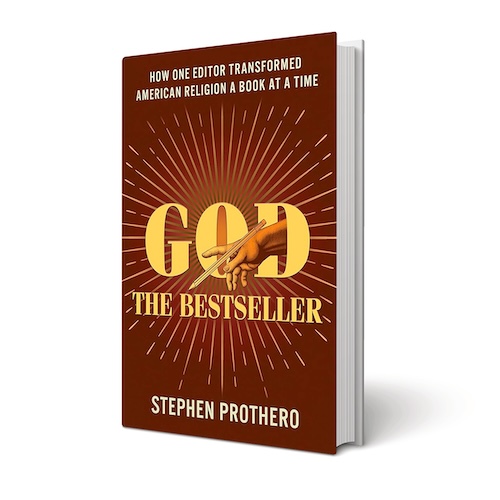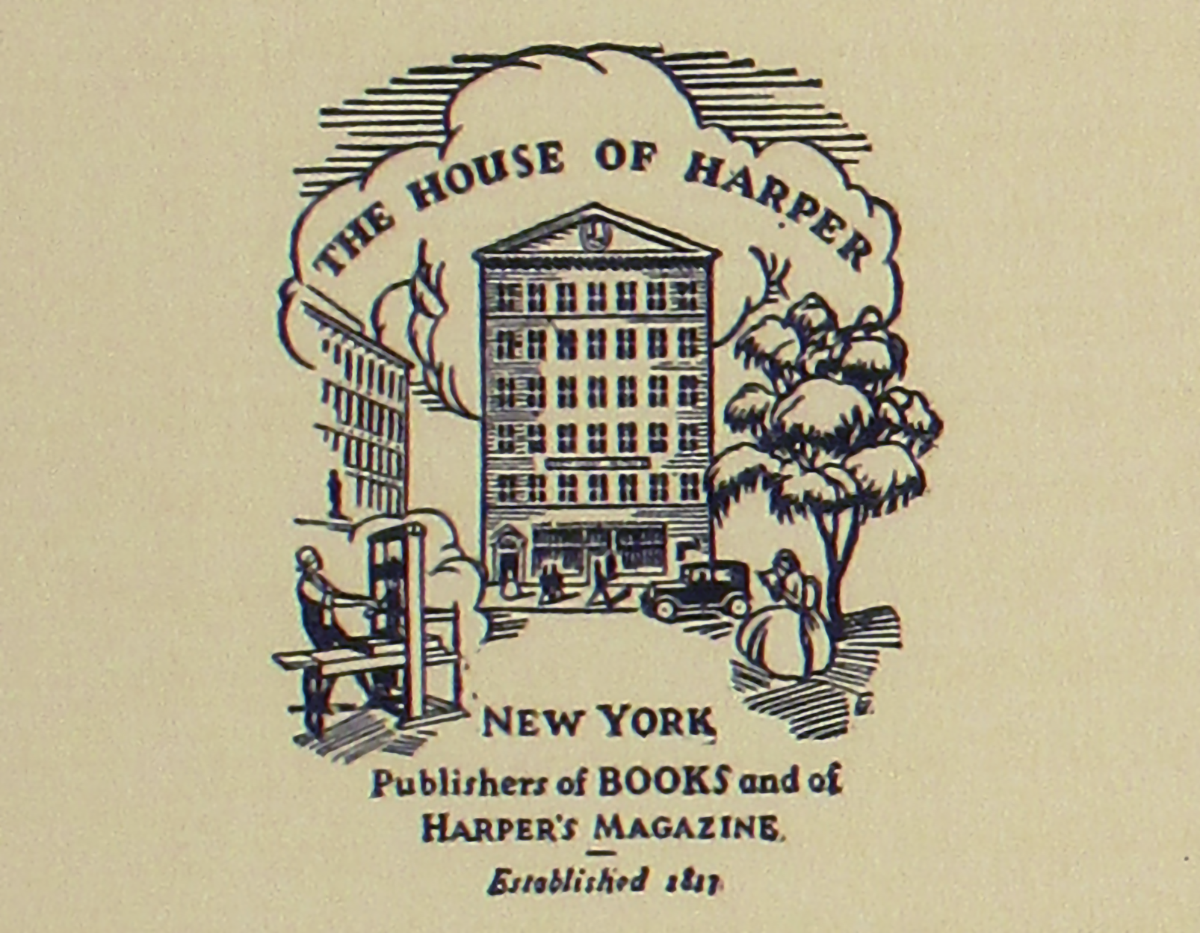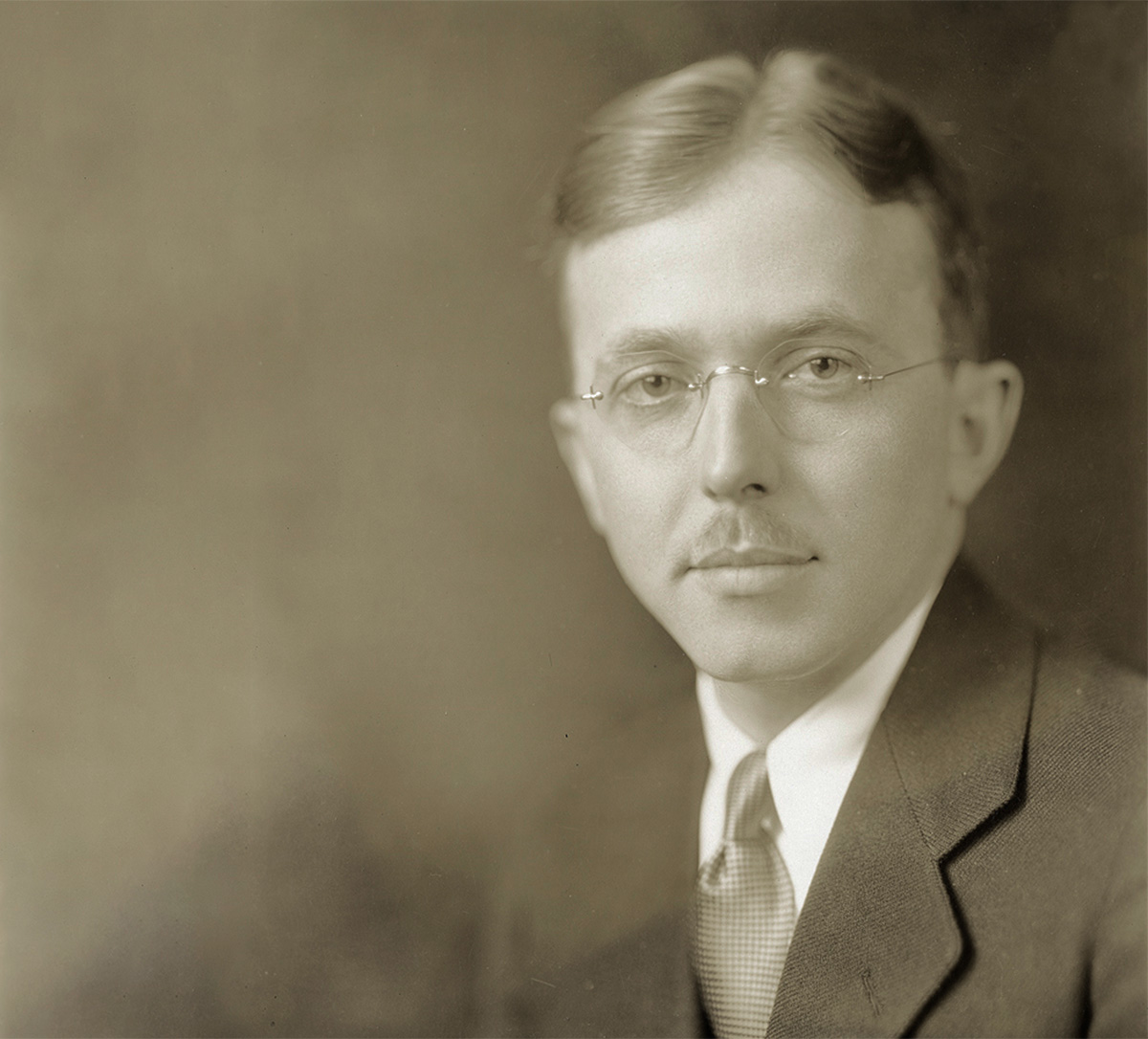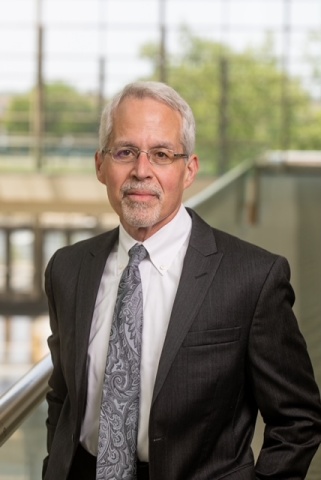In 1979, The Heretical Imperative: Contemporary Possibilities of Religious Affirmation hit bookshelves. In its pages, Boston University sociology professor Peter L. Berger highlighted what students of religion had long recognized, that “homo sapiens is a situated being, but also a being forever driven to transcend his situation.” Such restlessness escalated as our world got smaller, through exploration, commercial travel, and now, certainly, the internet. Berger went on to discuss “modernity as the universalization of heresy,” which he defined literally from the Greek verb hairein, “to choose.”
For at least a century, publishers have been pumping out spiritual-but-not-religious bestsellers. One man in particular made a career of it, and made the career of many. But despite some great names affixed to those books, the legacy of seeking a broad audience of the broad-minded is a curious one at best.

By Stephen Prothero
(HarperOne, 2023)
In the ancient world, authority was more or less adamantine, fixed, and so one inherited a religion, and deviations were few and fraught with peril. For us, however, who live in a world of competing authorities and “of religious uncertainty … modernity creates a new situation in which picking and choosing becomes an imperative.” And we Americans love choice. We love variety. We are easily bored. And we hate being told what to do.
Missing from Berger’s book, however, was any thoroughgoing exploration of the role popular books played in the spread of modern heresy. And certainly the role one man in particular played. God the Bestseller: How One Editor Transformed American Religion a Book at a Time more than makes up for that lacuna. Stephen Prothero, another Boston University professor, brings to life Eugene Exman, “who ran the religion book department at Harper & Brothers and then Harper & Rowe between 1928 and 1965,” and who published some of the most recognizable names in the world of religion (and quasi religion) of that period, from Harry Emerson Fosdick and Albert Schweitzer to Dorothy Day, Martin Luther King Jr., and Bill Wilson, co-founder of AA.
Exman dedicated his publishing career to producing a “Book of Books,” one that collated the best that all religions and spiritual practices had to offer in the way of religious experience. Exman’s own story, or at least Prothero’s telling of it, begins with religious experience—“I was invaded,” Exman would tell people. “He felt himself being lifted up and out of his body.” God revealed himself to a 16-year-old farm boy in a flash of light. Exman would live off that memory, that experience, the rest of his life, seeking to reproduce it and to enable others to “experience” God for themselves as he had.

This is key, because if there’s one phrase that’s repeated mantra-like in God the Bestseller it’s “hidebound dogma” (note the modifier). The books Exman would publish at the helm of Harper and Rowe’s religion division would seek that which transcended mere doctrine, a “perennial philosophy,” as Aldous Huxley’s own bestseller would be called—a common thread that supposedly runs through all religions, tying the earthly to the heavenly, matter to the spirit.
Exman was raised Baptist, a construal of the Christian faith that gives little truck to man-made traditions, rituals, and creeds.
Exman was raised Baptist, a construal of the Christian faith that gives little truck to manmade traditions, rituals, and creeds to begin with. But the synthetic, syncretistic “spirituality” promoted by Exman and his authors, who included a Who’s Who of 20th century spirituality for the masses, everyone from Buddhist D.T. Suzuki to Catholics Dorothy Day and Pierre Teilhard de Chardin to Hindu Jiddu Krishnamurti, would make most Baptists gasp.
Not surprisingly, when Exman got to the University of Chicago Divinity School, he began to question that encounter with the divine. He began to question his original calling as a missionary. And so he got into publishing, first at University of Chicago Press and then at the new religious book department of Harper & Brothers. The rest would become history.
Lest anyone think the religious bestseller began with Billy Graham, or even Exman’s authors, the 1920s had already produced more than its share. “Religious nonfiction was the second-bestselling book genre, trailing only adult fiction,” notes Prothero. However, “the overwhelming majority of religious books sold in the United States were either Bibles or parochial projects,” like Lutheran sermons for Lutheran pastors. Exman wanted to change that. He wanted to reach a broader reading public. And he “had no interest in interdenominational battles.” He wanted to cross denominational, and eventually religious, lines.

The book that provided the inspiration for this new publishing vision was William James’ own bestseller, The Varieties of Religious Experience (1902). In this work, James sought to “defend religion among its secular despisers … by tabling the question of truth and focusing instead on experiences.” This would become the blueprint for Exman’s publishing career.
One key to Exman’s publishing success was the editorial skillset of Margueritte Bro, who wrote Exman while working on a piece for the Christian Century on Edgar Cayce, the professional “psychic” whose supposedly preternatural talents enthralled both the writer-editor Bro and, later, Exman. Bro and Exman proved kindred spirits whose spiritual hunger led them to seek out “sainthood” not only in their own lives but in that of others. “I have a hobby…of collecting and cataloguing saints,” Exman once admitted. And the first prominent “saint” was the liberal Protestant churchman Harry Emerson Fosdick. Although Exman was not big on institutional religion, he remained for all his life a regular churchgoer, first as a member of Fosdick’s Park Avenue Baptist Church and then at Riverside Church, built on the Upper West Side with money supplied by another Baptist, John D. Rockefeller, and also pastored by Fosdick.
Fosdick was already a bestselling author by the time Exman entered the picture, with his first title, The Meaning of Prayer, appearing in 1915. But as noted, by the 1920s, “the religious book business was booming,” due in part to the shaking of people’s confidence in the inevitability of Progress in light of the War to End All Wars. Fosdick was also on the frontlines in the modernist-fundamentalist debate—in the former’s camp, of course. His first big book for Exman and Harper was a collection of previously published essays, As I See Religion (1932). Here Fosdick “presented an inclusive and pluralistic vision of religion,” even though he “rejected the temptation to seek ‘some irreducible minimum that … makes one substance of all faiths from Shintoism to Christian science.’” (Fosdick also believed that “Jesus will never be surpassed,” which “would not have made sense to Exman, who saw Jesus as one mystic among many.”)
Despite Fosdick’s enormous popularity in his day (relatively speaking), “No one today need read him or probably does read him for a single theological insight,” according to church historian Martin Marty. More lasting in his impact was Aldous Huxley, most famous for his dystopian Brave New World. Huxley participated, along with Exman, science writer–philosopher Gerald Heard, and novelist-playwright Christopher Isherwood, in a monastic-like community of spiritual seekers called Trabuco, in the Santa Ana Mountains. There they and occasional droppers-in would experiment with various forms of meditation, renunciation, contemplation—i.e., the “experiential religion” that Exman preferred. It was Heard who introduced Huxley to Vedanta, one of the six schools of Hindu philosophy. At Trabuco, Eastern practices predominated, with Jesus relegated to just one of the many incarnations of the Divine. Trabuco, however, would go belly up within a decade, with the Vedanta Society of Southern California assuming its debts and taking over its space.

The Trabuco experiment’s true legacy would prove to be the flurry of titles that furthered the idea of the supposed unity of all world religions, not only Huxley’s Perennial Philosophy but also fresh translations of Hindu classics and D.T. Suzuki’s Essays in Zen Buddhism (1949). On Exman’s to-do list was yet a more comprehensive comparative-religion book, that Book of Books, which was realized in a manner by Huston Smith’s mega-selling The Religions of Man (1958).
What constituted “religion,” even “spirituality,” was stretched to literally incredible lengths as Exman and his editor/friend/spiritual confidante Bro explored the paranormal. “It was their shared interest in the psychic Edgar Cayce that brought them together in 1943. They both believed in reincarnation. They both consulted with mediums.” This, too, had roots in William James, who with his wife began consulting a medium soon after their infant son died. “James ultimately concluded that there was lots of evidence of ‘really supernormal knowledge’ but not enough to convince him of the possibility of communicating with the dead.” Exman, too, “was sympathetic but more circumspect,” especially when it came to Harper’s reputation. Nevertheless, Harper would publish Nothing So Strange, the as-told-to autobiography of one Arthur Ford, a “trance medium” who in 1929 claimed to have contacted the late Harry Houdini. Bro would later credit Exman with bringing Ford “to Protestant respectability,” although this would depend on the Protestant, I imagine.
If this weren’t sufficiently out there, there was LSD for an extra kick. Heard and Huxley “became attracted in the early 1950s to the possibility of attaining mystical union with the divine through chemicals. Mescaline was followed by LSD. Huxley chronicled his experimentation in Doors of Perception and Heaven and Hell. Heard, too, pitched a book about his experience with mescaline, which he described as “a profoundly religious one.” Exman, to his credit, was “suspicious that Heard was attempting to get through drugs what he had been unable to achieve through spiritual discipline.”
At Trabuco, Eastern practices predominated, with Jesus relegated to just one of the many incarnations of the Divine.
Nevertheless, Exman would finally be persuaded to try LSD, which at the time was not an illegal substance. A second trip turned out to be a “shattering experience,” and turned him off drug use as a door to the divine once and for all.
Among the more vaunted, dare I say conventional, names that Exman published during his tenure at Harper were two Nobel Prize winners and an almost saint: Martin Luther King Jr., Albert Schweitzer, and Dorothy Day.
Day, the Catholic convert and “disreputable saint,” was an activist who, along with Peter Maurin, edited and published The Catholic Worker newspaper, which sold for a solitary cent and “developed over the course of the 1930s from a newspaper into a movement devoted to seeing Christ in all people, including (and especially) the homeless and the poor.”
Her book The Long Loneliness “narrated a series of personal experiences without losing sight of the importance of religious community and the imperative of social and political action.” Written not merely for fellow Catholics but, like all of Exman’s books, for a broader, educated audience, The Long Loneliness, published in 1952, garnered positive reviews, and a New Yorker profile of the author boosted sales.
Exman would pass on Day’s biography of the Little Flower, Saint Therese of Lisieux. Bro’s response to the manuscript “oozed anti-Catholic bias.” She considered St. Therese’s mortifications as “psychopathic.” “Hells bells, if we did all emulate the Little Flower we would have a generation of emotionally chastened nincompoops…” So much for the value of varied religious experience.
More down-to-earth was one of Exman’s idols, the man he dubbed “the Thirteenth Apostle,” Albert Schweizer. The Harper tomes Music in the Life of Albert Schweitzer (1951) and The Problem of Peace in the World Today (1954) added to “the myth of Schweitzer.” Exman extolled the Nobel Peace Prize winner for his activism and expansive respect-for-life ethics, which the doctor believed should be extended to animals and even plants. “All deep thinking ends in mysticism,” Albert Schweitzer said. “Real prayer is finding peace in all that comes to you and not fretting against that which comes. … The best prayer is ‘Thy will be done.’” This was all in keeping with the pan-religious spirituality that Exman (and Bro) wanted to spread.

Schweitzer’s fame would fade over time as critics began to dissect his medical work in Africa, which he intended, in Prothero’s words, “to atone for the sins of White colonizers,” as just another kind of imperialism. As they dug through his oeuvre, they came upon references and commentary (“The negro is a child, and with children nothing can be done without the use of authority”) deemed condescending at the least and racist at worst. The man who thought he had dismantled orthodox beliefs about Jesus in his Quest of the Historical Jesus was himself finally dismantled.
While Exman wholeheartedly embraced James’ definition of religion as “the feelings, acts, and experiences of individual men in their solitude, so far as they apprehend themselves to stand in relation to whatever they may consider divine,” he nevertheless remained attracted to activists, those who put their bodies where their spirituality was. This naturally drew him to Martin Luther King Jr. Exman competed with other major publishers to get into print a book about the Montgomery bus boycott, which began on December 5, 1955. Exman went to Montgomery and reached out to King personally, winning the civil rights leader’s trust. At first, the editor offered to hire a ghostwriter to work with the 28-year-old on his first book, but King was having none of it. While he employed the aid of historian Lawrence Reddick to write Stride Toward Freedom, and Exman and Bro both took strong editorial hands, “in the Boston University archives, there are chapter drafts written in King’s hand, sometimes in pencil, sometimes in red pen.”
Stride Toward Freedom “was a departure for Exman and his Book of Books, which had not lived up to the pluralistic promises” he had first made for it. Though he had published Hindus and Buddhists, “his list slighted Black writers.” Nevertheless, King’s first book garnered glowing reviews in scores of daily newspapers and magazines, with one reviewer “comparing King with Gandhi and Schweitzer.” But King’s success also meant the loss of Exman’s confidante, friend, and colleague, Margueritte Bro, who decided to resign as a contract editor for Harper after a battle over both publishing and personal priorities. (Harper had a contract with Bro’s sister to write on civil rights that preceded the agreement with King. Exman saw King as the better seller, however, and published his first.) “I feel that for you growth is stymied.” She meant, of course, spiritual growth, and noted that “the pressure of practicalities” (book sales) was inhibiting his one-time goal of union with his Higher Power.
Which takes us back to Exman’s “quest to recapture that moment on the road to Blanchester—to experience God in his bones again.” Here Prothero must admit that “You can’t serve God and publishing.” But a mere worldly busyness was hardly all that stood in the way of spiritual maturity. Did Exman really think he could have achieved some kind of “sainthood,” which presumably entailed a direct line to the divine, had he merely dropped out of the rat race? Just consider the manifold “experiences” that were to be had and that he (and William James) had recorded. Who or what is this God he sought to connect with? Hadn’t his misfire with LSD convinced him that wild, otherworldly, even inner-driven experiences may not necessarily be divine? Despite his contribution to our age of the “nones,” the swapping out of religion for spirituality, “Exman himself was spiritual and religious. He faithfully went to church. He put money in the collection plate. He sat on church committees. But he didn’t believe the real work of the spirit happened amid stained glass and altars.” That fear of the dreaded “hidebound dogma” again. And yet, “by reducing the ‘religion’ of Exman and his circle to what they denied, that term also erases too much.” Prothero insists that Exman, in a sense, had his cake and ate it to: he had managed to salvage religion, to make it a safe word, by cultivating a “religion of experience.” Yes, but whose? And of what?
The essence of religio is to bind together. And while the experience-chasers can hold coffee klatsches and small group meet-ups to discuss all the feels, that is not and never will be a religion. Which Prothero more or less gets.
Exman’s project succeeded because its native habitat is the ecology of consumer capitalism. The religion of experience preaches the habit of the never-ending search. That search produces not finding but longing. And the object of that longing is displaced by degrees—from God to the experience of God to the experience of whatever you understand to be God.
And yet Prothero acknowledges that “many millions of Americans … reject the religious pluralism of Exman’s Book of Books.” He adds, as if through gritted teeth, “What matters in religion is not experience but truth. … Their group is in possession of that truth, and they need to fight to defend it against falsehoods, perhaps even with guns.” (Again, the author teaches at Boston University, so you knew there had to be a connection drawn, albeit parenthetically, between “hidebound dogma” and violence.)
“Exman himself was spiritual and religious. But he didn’t believe the real work of the spirit happened amid stained glass and altars.”
As a short history of the American religious publishing game in the mid-20th century, and the signal role one man (and woman) played in that history, virtually transforming what passed for religion in the broader reading public’s imagination, Stephen Prothero does yeoman’s work in God the Bestseller. Anyone in the publishing trade will find this an enjoyable, if somewhat repetitive, read. (A quibble: Prothero risibly refers to the Commentary magazine of the mid-1940s as “conservative” as an explanation for its less-than-stellar review of Aldous Huxley’s The Perennial Philosophy. This is to read a later political orientation back into the publication’s liberal beginnings, a lazy way to explain the magazine’s disdain for the book’s “popular tone [and] vulgar appeal to the lending-library public.”)
Exman’s was “a life interrupted by a global pandemic, a global depression, and two world wars [but he] dedicated it to making meaning out of what to many in his generation seemed to be a meaningless morass.” In pursuit of meaning, he put between covers many a spiritual path. And despite his pursuit of that “perennial philosophy,” what can only be deemed contradictory spiritual paths. And, as Prothero notes, “He died a company man. He died a good man. He did not die a happy mystic.” Yet his legacy abides. Just go on the Amazon website, type in “religious experience,” and see what comes up as the first hit among the more than 30,000 hits. Let’s just say that you’ll never go broke exploring the variety of religious experiences.




